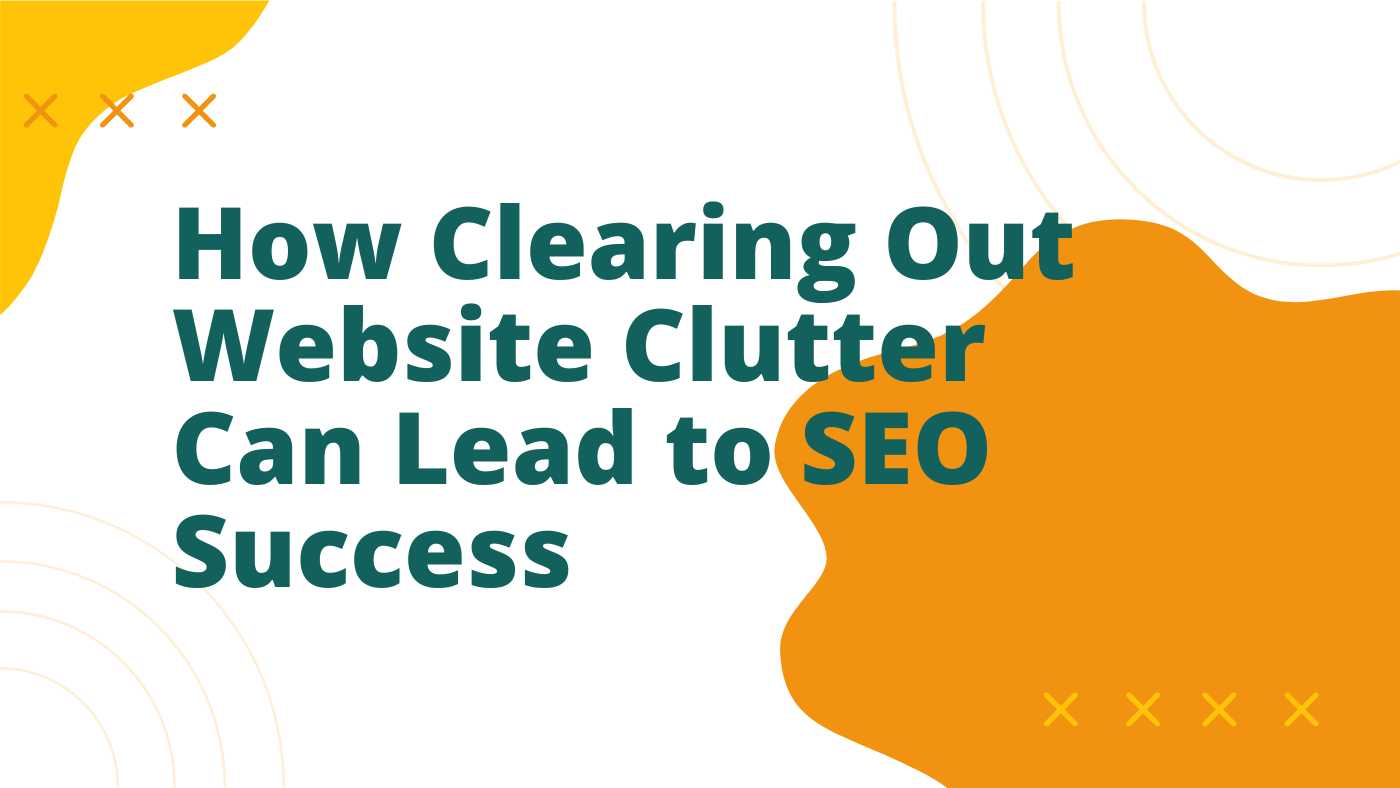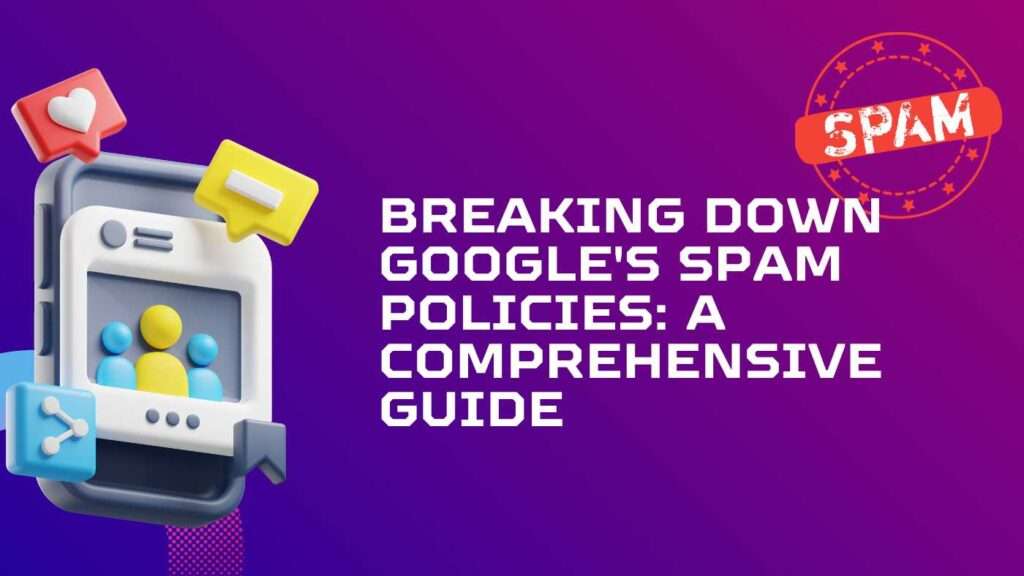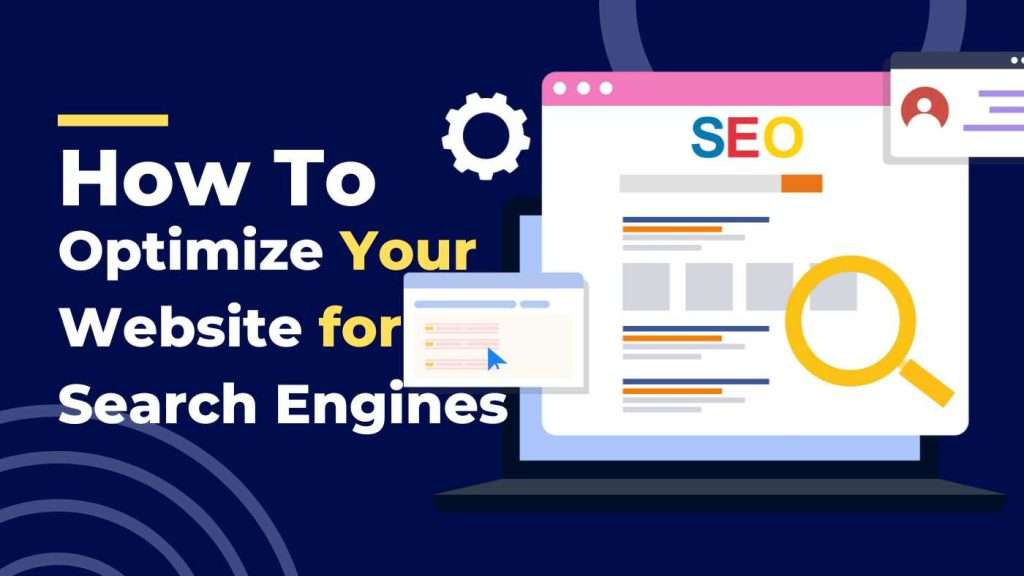Clear out the clutter and pave the way for SEO success! In today’s digital age, where attention spans are shorter than ever, a cluttered website can be a death sentence for your search engine optimization (SEO) efforts. Users want fast, seamless experiences when they visit a website, and if they are bombarded with a chaotic interface, they will quickly hit the back button. This not only damages your chances of ranking high in search results, but it also leads to high bounce rates and missed conversion opportunities.
The Importance of a Clutter-Free Website
A clutter-free website is essential for SEO success. When a visitor arrives at your website, they expect to find what they’re looking for quickly and easily. If your website is cluttered with unnecessary elements, it becomes difficult for users to navigate and find the information they need. This can lead to frustration and a negative user experience, which in turn can lower your search engine rankings.
In addition to improving user experience, a clutter-free website also allows search engines to crawl and index your pages more efficiently. When search engines crawl a cluttered website, they may have difficulty understanding the structure and relevance of your content. This can result in lower rankings and missed opportunities to attract organic traffic.
To ensure a clutter-free website, start by conducting a thorough audit of your website’s content and design. Identify any elements that are outdated, irrelevant, or no longer serve a purpose. By removing these clutter elements, you can create a cleaner and more user-friendly website that is optimized for search engines.
How Clutter Affects User Experience
Clutter has a significant impact on user experience. When a user arrives at a cluttered website, they are often overwhelmed by the amount of information and visual distractions. This can make it difficult for them to focus on the main content and take the desired actions, such as making a purchase or filling out a form.
One of the key aspects of a clutter-free website is clear and concise content. Avoid lengthy paragraphs and unnecessary jargon. Break up your content into smaller, digestible chunks and use headings, subheadings, and bullet points to improve readability. This allows users to quickly scan the page and find the information they need.
Another aspect to consider is the use of whitespace. Whitespace refers to the empty space between elements on a page. By incorporating whitespace strategically, you can create a clean and organized layout that enhances readability and helps users focus on the most important elements of your website.
The Impact of Clutter on Website Loading Speed
Website loading speed is a crucial factor in both user experience and SEO. Studies have shown that users expect websites to load within a few seconds, and any delays can result in increased bounce rates and decreased conversions.
Cluttered websites often suffer from slow loading speeds due to the excessive amount of content and media files. Each element on a webpage, such as images, videos, and scripts, adds to the overall page size and can slow down loading times. This can be particularly problematic for mobile users who may have slower internet connections.
To improve website loading speed, start by optimizing your images and media files. Compress images without sacrificing quality and consider lazy loading techniques to defer the loading of non-critical elements until they are needed. Additionally, minify and combine your CSS and JavaScript files to reduce the number of HTTP requests required to load your website.
Clutter’s Effect on Mobile Optimization
Mobile optimization is no longer optional but a necessity in today’s mobile-first world. With the majority of internet users accessing websites on mobile devices, ensuring a clutter-free mobile experience is crucial for SEO success.
Get Wp Rocket: WP Rocket Pricing & Licenses | Premium WordPress Caching Plugin (wp-rocket.me)
Cluttered websites can be particularly challenging to navigate on smaller screens, leading to frustration and high bounce rates. It’s essential to design your website with a mobile-first approach, ensuring that it is responsive and adapts seamlessly to different screen sizes.
Simplify your mobile layout by removing unnecessary elements that may clutter the screen. Optimize your font sizes and spacing to improve readability on smaller devices. Additionally, consider using mobile-specific features such as click-to-call buttons and mobile-friendly forms to enhance the user experience on mobile devices.
The Correlation Between Clutter and Bounce Rate
A cluttered website often leads to high bounce rates, which can negatively impact your SEO efforts. Bounce rate refers to the percentage of visitors who leave your website after viewing only one page. A high bounce rate indicates that users are not finding the information they need or are not engaged with your content.
Cluttered websites can confuse and overwhelm visitors, causing them to quickly abandon your website and look for alternatives. This sends a negative signal to search engines and can result in lower rankings.
To reduce bounce rates, focus on creating a clutter-free and engaging user experience. Ensure that your website’s navigation is intuitive and easy to use, allowing users to find what they’re looking for quickly. Use clear calls-to-action to guide users through the desired conversion paths. Additionally, provide valuable and relevant content that keeps users engaged and encourages them to explore your website further.
Organizing and Decluttering Your Website
Now that we understand the importance of a clutter-free website and how clutter can hinder SEO success, let’s explore practical tips to organize and declutter your website.
Optimizing Images and Media Files for Faster Loading
As mentioned earlier, images and media files can significantly impact website loading speed. To optimize your images, start by compressing them without sacrificing quality. Use image optimization tools or plugins that automatically compress images upon upload.
Additionally, consider lazy loading techniques, which allow images and other media files to load only when they are visible in the user’s viewport. This can significantly improve loading times, especially for webpages with multiple images or videos.
Read More: How AMP Works in Search Results
Streamlining Navigation and Menu Structure
Navigation is a critical aspect of a clutter-free website. Review your website’s navigation and menu structure to ensure that it is intuitive and user-friendly. Aim for a maximum of three levels in your menu structure to avoid overwhelming users with too many options.
Consider organizing your menu based on user priorities and the most important pages or sections of your website. Use descriptive and concise labels for menu items to guide users effectively. Additionally, consider implementing breadcrumbs to provide users with a clear understanding of their location within your website.
Removing Unnecessary Plugins and Scripts
Plugins and scripts can add functionality to your website, but they can also contribute to clutter and slow down loading times. Review the plugins and scripts installed on your website and remove any that are unnecessary or no longer serve a purpose.
Regularly update your plugins and ensure that they are compatible with the latest version of your content management system. This can help improve website security and performance.
Conclusion: The Benefits of a Clutter-Free Website for SEO Success
In conclusion, a clutter-free website is essential for SEO success. By clearing out website clutter, you can improve user experience, boost loading speed, optimize for mobile devices, reduce bounce rates, and enhance overall website performance.
Take the time to organize and declutter your website by removing irrelevant and outdated content, streamlining navigation, optimizing images and media files, and removing unnecessary plugins and scripts. These efforts will not only benefit your SEO rankings but also create a positive and engaging user experience that encourages visitors to stay on your website and convert.





